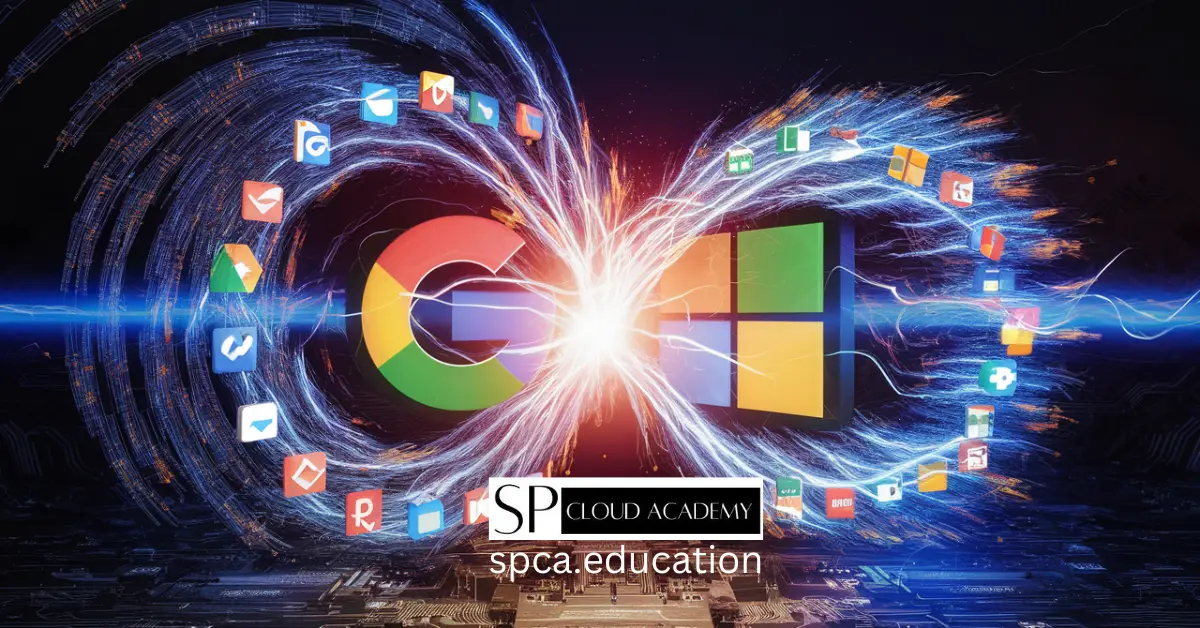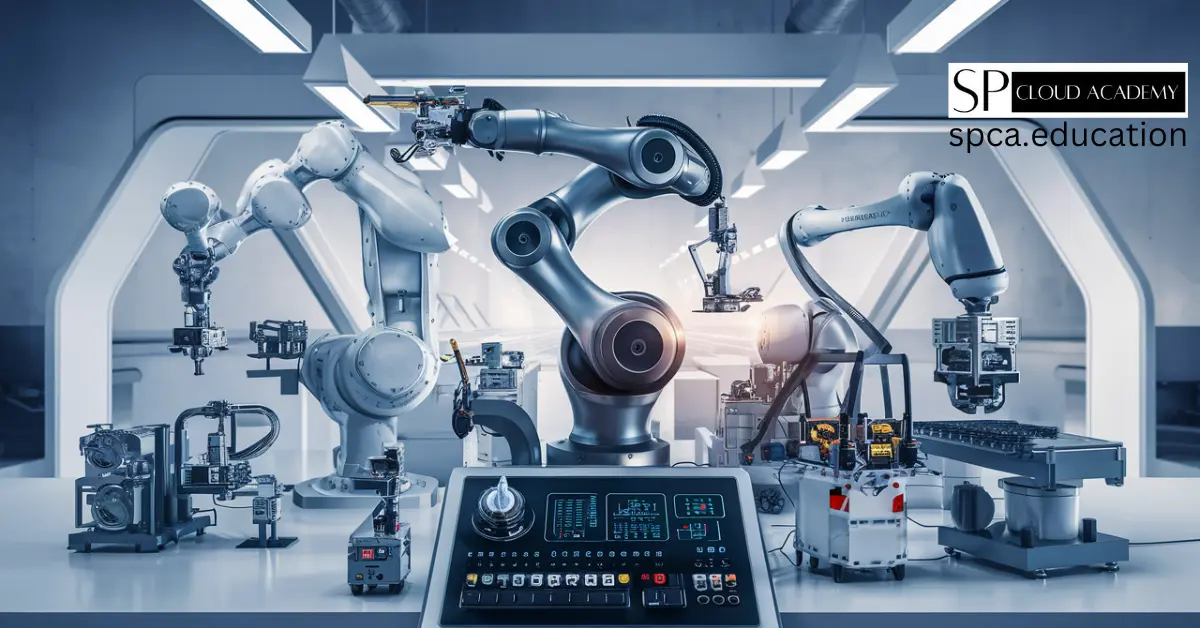The influence of artificial intelligence (AI) extends far and wide, with education standing as a pivotal domain being profoundly reshaped by its capabilities. AI’s significance in education is unparalleled, as it not only revolutionizes the traditional classroom but also offers personalized learning experiences, makes education more accessible and inclusive, and equips educators with data-driven insights to enhance teaching methods. This article explores the multifaceted impact of AI on education, from the integration of AI-powered tools to the ethical considerations that arise in this transformative process. It delves into case studies, exemplifying AI’s successful implementation and underscores the evolving educational landscape. With AI as a transformative force, this article seeks to provide insights into the dynamic intersection of technology and education, emphasizing its potential for positive change and the need to address the associated challenges.
Brief overview of the growing influence of artificial intelligence (AI) in various sectors
Artificial Intelligence (AI) has emerged as a transformative force in various sectors, revolutionizing the way we live, work, and interact. In healthcare, AI aids in disease diagnosis and treatment recommendations, improving patient care and medical research. In finance, it enhances fraud detection, risk assessment, and automated trading. The automotive industry leverages AI for self-driving cars, making transportation safer and more efficient. Retail relies on AI for customer personalization and inventory management. AI-driven chatbots and virtual assistants are revolutionizing customer service and communication. In manufacturing, AI optimizes production processes and predictive maintenance. Moreover, AI has profound implications for cybersecurity, agriculture, and entertainment. Its cross-sector influence is a testament to its versatility, redefining how businesses and industries operate, innovate, and serve the needs of society.
Significance of Artificial Intelligence in education and classroom
The significance of Artificial Intelligence (AI) in education and the classroom is substantial, as it brings about a range of benefits and transformative possibilities:
- Personalized Learning: AI can create individualized learning paths for students, adapting to their pace and style of learning. This tailoring of content optimizes understanding and retention, making education more effective.
- Accessibility and Inclusivity: AI-powered tools can assist students with disabilities by providing real-time transcription, translation, and other supportive features, making education more accessible and inclusive.
- Data-Driven Insights: AI collects and analyzes vast amounts of data on student performance, helping educators identify learning trends, challenges, and opportunities for improvement. This data-driven approach enhances decision-making at both individual and institutional levels.
- Efficiency and Automation: Administrative tasks, such as grading and scheduling, can be automated by AI, allowing educators to allocate more time to teaching and focusing on their students.
- Content Creation and Recommendation: AI can generate educational content, suggest resources, and provide smart content recommendations, reducing the workload of educators and ensuring access to high-quality materials.
- Adaptive Assessment: AI-powered assessments adjust their difficulty based on a student’s responses, offering a more accurate evaluation of their knowledge and abilities.
- Teacher Support and Professional Development: AI tools can assist educators in lesson planning, content creation, and ongoing professional development, making them more effective in the classroom.
- Global Reach: Online education platforms driven by AI can reach students worldwide, democratizing access to quality education and fostering cross-cultural learning experiences.
- Engagement and Interactivity: AI can enhance student engagement through gamified learning experiences, virtual tutors, and chatbots that provide immediate answers to questions, fostering a more interactive and engaging learning environment.
- Cost Savings: By automating routine tasks and optimizing resource allocation, AI can lead to cost savings for educational institutions, making education more affordable and sustainable.
The significance of AI in education lies in its potential to improve the quality of education, enhance the learning experience, and empower educators with tools that foster student success. However, responsible and ethical use of AI in education is crucial to address concerns related to data privacy, bias, and the potential impact on the role of educators and the overall learning environment.
Accessibility and Inclusivity
Accessibility and inclusivity are critical considerations in education, and Artificial Intelligence (AI) plays a significant role in addressing these aspects:
- Assistive Technologies: AI-driven assistive technologies, such as text-to-speech and speech-to-text, assist students with disabilities by making educational content accessible in various formats, ensuring that no one is left behind.
- Language Translation and Transcription: AI can automatically translate educational materials and transcribe spoken content, helping students who are non-native English speakers or have hearing impairments to access and understand the content.
- Adaptive Learning: AI can personalize learning experiences based on individual needs, which is especially beneficial for students with diverse learning styles, abilities, and backgrounds, ensuring that the content is more accessible and engaging for all.
- Inclusive Design: AI can help educators design inclusive and accessible learning materials, ensuring that content is compatible with screen readers, interpreters, and other assistive technologies, making it easier for students with disabilities to participate fully in the learning process.
- Universal Design for Learning (UDL): AI can support UDL principles by providing multiple means of representation, engagement, and expression, accommodating different learning needs and styles.
- Data-Driven Insights: AI collects data on student performance and engagement, helping educators identify specific areas where students may need additional support, ensuring that all students have equal opportunities to succeed.
- Remote Learning Accessibility: AI-powered tools can bridge the digital divide by offering more accessible and equitable remote learning experiences, particularly during times when traditional classroom settings are not feasible.
- Feedback and Support: AI can provide real-time feedback to students, helping them understand their progress and areas for improvement, and this can be especially beneficial for those who require additional support.
- Customized Learning Resources: AI can create and recommend customized learning resources, taking into account each student’s unique needs and preferences, making learning materials more accessible and engaging.
- Inclusive Assessment: AI-powered assessments can be designed to accommodate various abilities and learning styles, ensuring that students with disabilities or diverse backgrounds are not disadvantaged during evaluations.
In sum, AI’s contribution to accessibility and inclusivity in education is profound, as it empowers educational institutions and educators to create a learning environment that caters to the needs of all students, irrespective of their abilities, backgrounds, or learning styles.
AI-Powered Content and Resources
AI-powered content and resources in education have the potential to revolutionize the way students access and interact with learning materials. Here are some key aspects of AI’s impact in this regard:
- Customized Educational Content: AI can generate personalized learning materials tailored to individual students’ needs, ensuring that the content aligns with their skill levels and learning preferences.
- Adaptive Learning Platforms: AI-driven adaptive learning platforms adjust the difficulty of content based on a student’s performance, providing targeted challenges and support to optimize learning outcomes.
- Content Recommendations: AI can suggest relevant educational resources, including articles, videos, and exercises, based on a student’s current progress and areas that need improvement.
- Smart Content Creation: AI tools assist educators in creating high-quality content more efficiently, including lesson plans, quizzes, and interactive materials, saving time and enhancing the quality of teaching materials.
- Content Summarization and Simplification: AI can summarize complex educational content, making it more accessible to students with varying levels of comprehension.
- Language Translation: AI-driven language translation tools can help students access educational content in their native language, promoting inclusivity and accessibility for non-native speakers.
- Content Enhancement: AI can enhance multimedia content by adding subtitles to videos, generating alternative text for images, and ensuring content is accessible to students with disabilities.
- Automated Content Updates: AI systems can keep educational materials up-to-date by scanning for the latest information and making real-time content recommendations.
- Content Quality Assurance: AI can assess the quality of educational content, helping educators and institutions ensure that materials meet the necessary educational standards and objectives.
- Open Educational Resources (OER): AI can be used to curate, organize, and recommend OER to students and educators, reducing costs and increasing access to educational content.
AI-powered content and resources are instrumental in creating a more engaging, adaptive, and accessible learning experience. By tailoring educational materials to individual needs and providing real-time recommendations and support, AI empowers students and educators to make the most of their educational journey.
Data-Driven Insights
Data-driven insights in education, facilitated by artificial intelligence (AI) and machine learning, offer a wealth of benefits for students, educators, and institutions:
- Personalized Learning: AI analyzes student performance data to create personalized learning paths, adapting the curriculum to individual strengths and weaknesses.
- Early Intervention: AI can identify struggling students early on, allowing educators to provide timely interventions and support, preventing learning gaps from widening.
- Performance Tracking: Educators can monitor each student’s progress more effectively, understanding their strengths and areas in need of improvement.
- Learning Trends: AI helps identify broader learning trends within classrooms and institutions, aiding in curriculum improvement and resource allocation.
- Data-Driven Decision-Making: Institutions can use data to make informed decisions, such as curriculum changes, resource allocation, and investments in educational technology.
- Predictive Analytics: AI can predict future student performance and behaviors, enabling institutions to anticipate challenges and implement proactive measures.
- Assessment and Feedback: AI-driven assessment tools offer more detailed and immediate feedback to students, helping them understand their performance and areas for improvement.
- Resource Allocation: By analyzing data on student needs and performance, institutions can optimize resource allocation, ensuring that resources are directed where they are most needed.
- Quality Assurance: AI helps maintain and improve the quality of education by monitoring and assessing the effectiveness of teaching materials and methods.
- Continuous Improvement: Data-driven insights foster a culture of continuous improvement in education, as institutions and educators can use data to refine their strategies and approaches.
Overall, data-driven insights in education empower educators and institutions to tailor their approach to individual students and make informed decisions about curriculum, teaching methods, and resource allocation. This results in improved educational outcomes and a more efficient and effective educational system.
Teacher Support and Professional Development
Artificial Intelligence (AI) plays a pivotal role in providing support and enhancing professional development for teachers:
- Lesson Planning Assistance: AI tools can assist educators in creating lesson plans by offering suggestions, content recommendations, and templates that align with curriculum standards and learning objectives.
- Content Creation: AI-generated content, such as quizzes, assignments, and instructional materials, can help teachers save time and diversify their teaching resources.
- Classroom Management: AI-driven classroom management systems can help educators organize and schedule lessons, assessments, and resources more efficiently.
- Assessment and Grading Automation: AI automates the grading process, providing quick and accurate feedback to students, saving educators time and allowing for more detailed assessment.
- Personalized Professional Development: AI can recommend tailored professional development opportunities and resources based on a teacher’s individual strengths and areas for improvement.
- Feedback and Improvement: AI systems can provide teachers with feedback on their teaching methods and effectiveness, enabling them to make data-informed adjustments.
- Collaborative Learning Communities: AI can connect teachers with online communities and resources, facilitating knowledge sharing and collaboration with peers and experts in the field.
- Ongoing Training: AI-supported online courses and resources enable teachers to engage in continuous professional development, staying up-to-date with the latest teaching methods and trends.
- Adaptive Learning for Educators: Just as AI tailors content for students, it can also adapt professional development materials to a teacher’s specific needs and learning preferences.
- Support for New Educators: AI can assist novice teachers by providing mentorship, guidance, and resources to help them acclimate to the teaching profession.
AI-powered teacher support and professional development tools empower educators to improve their teaching methods, save time on administrative tasks, and continually develop their skills and knowledge. This not only benefits teachers but also has a positive impact on student learning outcomes.
Ethical and Privacy Concerns
The integration of artificial intelligence (AI) in education and the classroom raises several ethical and privacy concerns that need to be addressed:
- Data Privacy: AI systems collect and analyze vast amounts of data about students, raising concerns about the security and privacy of this information. Unauthorized access to or mishandling of student data can lead to privacy breaches.
- Data Ownership: Questions arise about who owns and controls the data generated by AI in education. Students, parents, teachers, and institutions may have different interests and concerns regarding data ownership.
- Bias and Fairness: AI algorithms can perpetuate bias in educational materials and assessments. Biased algorithms may disadvantage certain student groups or perpetuate stereotypes, leading to unequal educational outcomes.
- Transparency and Accountability: It can be challenging to understand how AI systems make decisions. Ensuring transparency and accountability in AI algorithms is essential to prevent biased or unfair outcomes.
- Student Profiling: Continuous data collection can lead to detailed student profiles, potentially infringing on privacy rights and ethical concerns about surveillance.
- Informed Consent: Students and parents should be informed about the data collection and its purposes. Obtaining informed consent for data usage is a complex issue, particularly when students are minors.
- Security Vulnerabilities: Educational institutions and AI systems must be vigilant in safeguarding data against cybersecurity threats, as data breaches can have severe consequences.
- Depersonalization of Education: Overreliance on AI can depersonalize education, leading to a lack of human connection and understanding, which are crucial in the learning process.
- Standardization vs. Individualization: There’s a balance between standardized educational content and individualized learning. Ensuring that AI respects both is an ethical challenge.
- Job Displacement: Ethical considerations extend to the potential impact of AI on educators’ jobs. Ensuring that AI complements, rather than replaces, the role of teachers is a significant ethical concern.
Addressing these ethical and privacy concerns in AI-powered education requires robust policies, clear guidelines, and ethical frameworks. Collaboration among educators, policymakers, technology providers, and other stakeholders is essential to create a responsible and secure AI-driven educational environment.
Preparing for the Future
Preparing for the future in an education landscape increasingly influenced by artificial intelligence (AI) involves a combination of strategies for both educators and students:
- Digital Literacy and AI Skills: Students and educators should acquire digital literacy skills and a basic understanding of AI concepts. This empowers them to navigate the AI-driven world and make informed decisions.
- Continuous Learning: Both teachers and students should adopt a mindset of continuous learning. AI and technology evolve rapidly, and staying up-to-date with the latest tools and trends is essential.
- Ethics and Responsible Use: Education about the ethical use of AI is crucial. Students should learn about responsible AI development, data privacy, and how to use AI tools ethically.
- Critical Thinking and Problem-Solving: AI can handle routine tasks, so the emphasis should shift to teaching critical thinking, creativity, and complex problem-solving skills that AI can’t replicate easily.
- Interdisciplinary Learning: Encourage interdisciplinary learning, as AI often involves various fields such as computer science, ethics, and data analysis. This prepares students for AI-related careers.
- Teacher Professional Development: Invest in the professional development of teachers, helping them adapt to new AI tools and teaching methodologies.
- Policy Development: Policymakers should craft clear and up-to-date policies regarding the use of AI in education. These should address data privacy, security, and ethical considerations.
- Accessible Resources: Ensure that AI-driven educational resources are accessible to all students, including those with disabilities and from underserved communities.
- Inclusivity and Diversity: Promote diversity and inclusivity in AI development to minimize bias and ensure that AI tools cater to a broad range of users.
- Collaboration: Foster collaboration between educators, students, technology providers, policymakers, and researchers to drive innovation and ensure AI’s responsible and effective use.
- Experimentation and Innovation: Encourage experimentation and innovation in the classroom. Teachers should have the freedom to explore and test AI-driven tools and methodologies.
- Parent and Community Engagement: Educate parents and the community about AI in education, its benefits, and the importance of digital literacy for students.
Preparing for the future in an AI-enhanced educational landscape involves a proactive and adaptable approach that equips individuals and institutions with the skills, knowledge, and ethical understanding necessary to thrive in an increasingly AI-driven world.
Case Studies and Examples
Examining case studies and examples of AI in education can offer insights into successful implementations and their impact. Here are a few notable examples:
- Squirrel AI: This adaptive learning platform uses AI to personalize learning for K-12 students. It assesses a student’s strengths and weaknesses and tailors content and pacing accordingly. Squirrel AI has shown significant improvements in student outcomes.
- Carnegie Learning’s MATHia: MATHia is an AI-powered math software used in schools. It personalizes math instruction for each student, adapting to their skill level and learning speed, resulting in improved math performance.
- Duolingo: Duolingo, a language learning platform, uses AI to provide personalized language instruction. It adapts lessons based on a student’s proficiency and learning style, making language learning more efficient and accessible.
- DreamBox: DreamBox is an adaptive math program for elementary and middle school students. It uses AI to adjust to a student’s math proficiency level and provide a customized learning path, helping improve math skills.
- Coursera: Online education platform Coursera uses AI for content recommendation, helping learners discover relevant courses and materials based on their interests and prior learning experiences.
- Georgia State University’s Chatbot: The university’s AI-driven chatbot helps students with administrative tasks, such as course registration and financial aid inquiries, improving student support and administrative efficiency.
- Adaptive Assessment Tools: Various adaptive assessment platforms, like Knewton and Edulastic, use AI to offer personalized assessments that adjust to each student’s abilities and provide more accurate measurements of their knowledge.
- Tutoring Chatbots: Many universities and institutions employ AI chatbots to offer instant tutoring and support to students, answering their questions and providing guidance 24/7.
- K-12 Virtual Schools: Online K-12 schools powered by AI, such as Florida Virtual School, use AI to offer a wide range of courses and personalize instruction for students.
- OpenAI’s GPT in Education: AI language models like GPT have been used to develop AI tutors that can answer students’ questions and provide explanations across various subjects.
These case studies demonstrate the diverse applications of AI in education, from adaptive learning platforms to virtual tutors and administrative support. They showcase how AI is transforming education to make it more personalized, efficient, and accessible for students and educators.
Conclusion
In conclusion, the integration of Artificial Intelligence (AI) in education is reshaping the educational landscape, offering a wealth of possibilities and opportunities for students, educators, and institutions. AI’s impact is profound, as it ushers in a new era of personalized learning, accessibility, and efficiency.
AI-driven technologies enable tailored learning experiences, ensuring that students receive education that aligns with their unique needs and learning styles. Moreover, AI enhances accessibility and inclusivity by breaking down barriers and accommodating students with disabilities or language challenges.
Data-driven insights from AI provide educators with invaluable information to refine teaching strategies and foster student success. It also streamlines administrative tasks, freeing up time for teachers to focus on instruction.
While AI holds great promise, ethical considerations and privacy concerns must be addressed to ensure responsible use and the protection of student data. Careful policy development and transparency are essential to navigate the challenges presented by AI in education.
As we prepare for the future, it is crucial for students and educators to acquire digital literacy and AI skills, emphasizing continuous learning and ethical AI use. Collaboration among stakeholders and the promotion of diversity and inclusivity in AI development are key to a responsible and successful AI-powered education system.
In this dynamic and evolving educational landscape, AI is a transformative force with the potential to unlock new dimensions of learning, making education more effective, engaging, and accessible for all. By harnessing the capabilities of AI responsibly, we can pave the way for a brighter and more inclusive future of education.
See also
https://spca.education/artificial-intelligence-ai-and-fourth-industrial-revolution-ir-4-0/
-

Battle of the Tech Titans: A Deep Dive into Google vs. Microsoft Ecosystems
-

eSIM Revolution: Why SIM-Less Smartphones Are the Future of Mobile Tech
-

Robotic Process Automation: The Future of Work or The End of Jobs?
-

Sandboxing Technology Explained: How It Shields Your System from Cyber Threats
-

The Metaverse Revolution: How It’s Changing the Way We Work, Play, and Live
-

Digital Twins: The Future of Smart Technology and How It’s Transforming Industries
